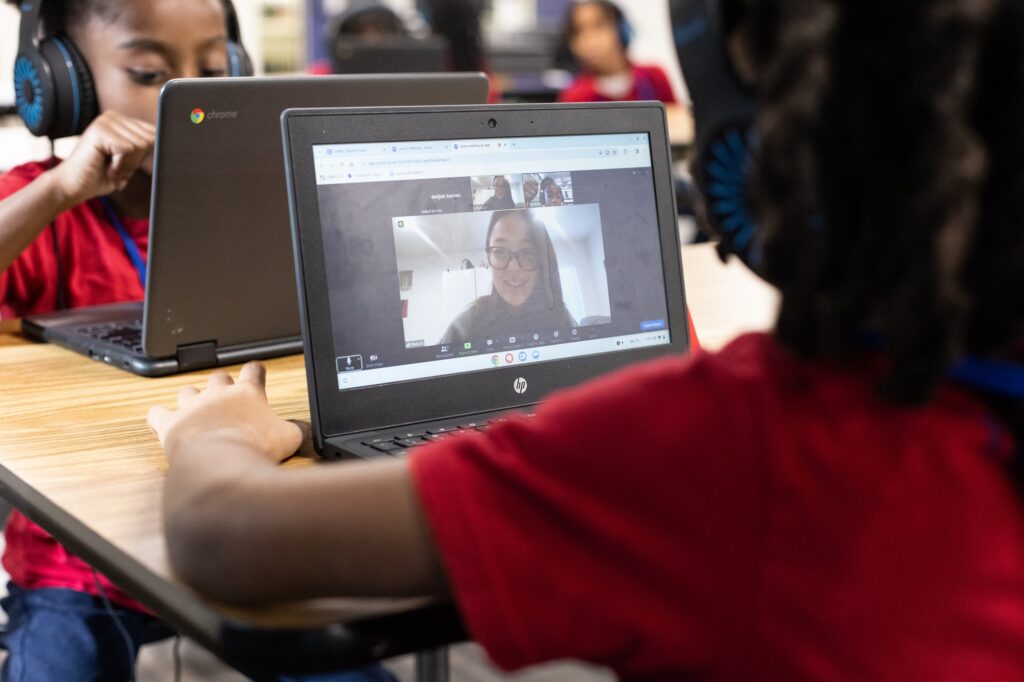
Courtesy: Teach for America
School is back in session. In California, we ended the prior school year with promising data that student attendance rates throughout the state are rising from historic lows during the pandemic. While having students in seats is cause for celebration, we must ensure that we have enough teachers in classrooms.
California has a long way to go. We rank 47th in the country for student-teacher ratio. Our elected officials are making investments in school staffing, yet there are further measures we should be taking to make sure students receive the quality education they deserve. And there’s no time to waste.
The initiative we should be champing at the bit to implement is high-impact tutoring: tutoring in one-on-one situations or very small groups meeting at least 30 minutes, three or more times a week. Here’s why this is an effective, scalable way to provide students with high-quality educators:
You can’t argue with data. Research shows that high-dosage tutoring is one of the most effective ways to help students make academic progress. Yet few students actually receive it. A recent study from Stanford University demonstrated the many positive effects of tutoring, including increased reading and math scores, attendance and a feeling of belonging. Teach For America’s (TFA) tutoring program, the Ignite Fellowship, finds and develops tutors who connect virtually with students during the school day. Fellows, who are paid for their work, are supported by a school-based veteran educator to customize instruction. Seventy-one percent of the 3,500 students across the country being tutored by Ignite fellows meet their semester-long reading and math goals.
Tutoring is a pipeline to teaching. Teacher morale is an ongoing issue. Because teaching is so unique, it can be hard to fully prepare aspiring educators for what it’s like to lead a classroom. Tutoring serves as a way for college students to step behind the wheel, with a professional providing roadside assistance before they are given full control. This can be key to teacher recruitment and retention — before people fully enlist in becoming a teacher, they have the opportunity to see if this profession is right for them. AmeriCorps, which also invests in employing young people as tutors to help them jump-start service-oriented careers, has found that more than half of its tutors hope to pursue a career in education after their service. When teachers are more confident stepping into their classrooms, students are the ones who reap the rewards.
Tutors ease the burden for teachers. Tutors can focus on small groups or individual sessions with students — something that lead teachers don’t always have the capacity to do. This way, tutors can address specific learning gaps for individual students, meeting more individual and diverse needs, and allowing students to build authentic relationships with multiple educators/mentors. I have had teachers tell me they wish they could clone themselves so they could work with more students to meet different needs and speeds. In our reality, tutors may be the closest thing we have to clones.
Prioritizing diversity. To provide a diverse experience for our nation’s students, we must have their educators — their role models — reflect them. This means we should prioritize recruiting and retaining teachers of color. Throughout California’s public schools, 77% of the K-12 population is composed of students of color, whereas only 37% of educators identify as people of color. This kind of ratio is true for Los Angeles, where I am based. That’s why I’m excited to be welcoming the Ignite Fellowship to schools throughout Los Angeles (and expanding even further throughout California) this year, helping bring more diverse and locally rooted teachers into classrooms. People of color face historically more hurdles than white people in the workforce, and this is even more extreme in the teaching profession. Tutoring is a way to expand the diversity of the teacher pipeline and can increase students’ access to educators from diverse backgrounds. Virtual programs like Ignite also allow for more flexibility and accessibility, meaning fewer hurdles for aspiring teachers to become tutors, and more opportunities for students to connect with tutors and mentors.
The school year may already be underway, but the reality is that schools will be fighting to staff their classrooms all year. Anything we can do to mitigate the detrimental effects that understaffed schools have on students should be a priority. Investing in tutors is an actionable way to help staff schools with diverse educators, with an added benefit of creating a pipeline of tomorrow’s teachers.
We have the proof that it will help our students, so what are we waiting for?
•••
Lida Jennings is the executive director of Teach For America Los Angeles and San Diego.
The opinions in this commentary are those of the author. We welcome guest commentaries with diverse points of view. If you would like to submit a commentary, please review our guidelines and contact us.

